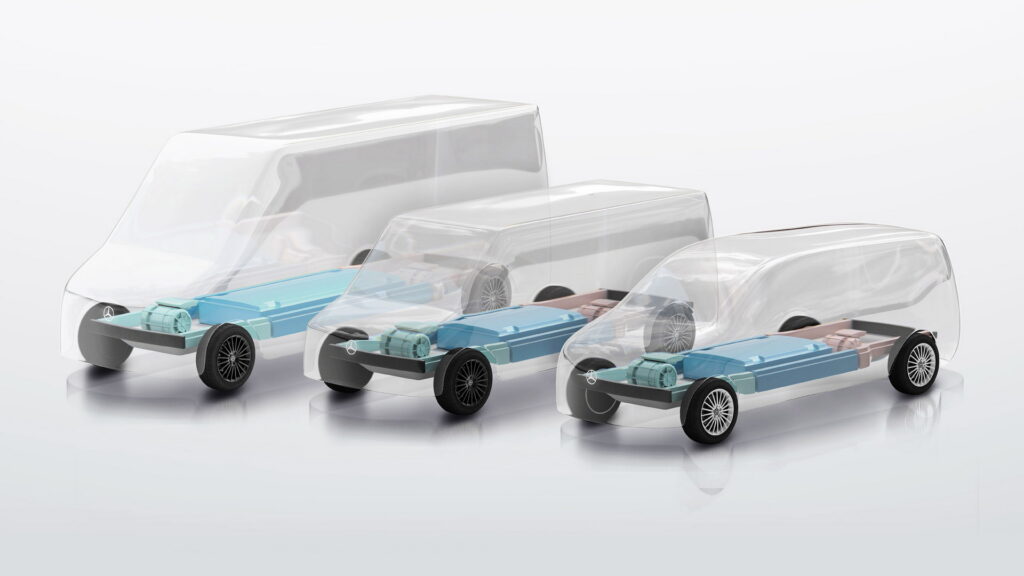Mercedes has big plans for its future van lineup, as it has just announced a brand-new EV-dedicated platform. The first model to be based on the new Van Electric Architecture (VAN.EA) will debut in 2026, paving the way for more midsize and large vans.
The VAN.EA, which was developed from scratch, consists of three modules designed to adapt to different types of fully electric vehicles. The front module including the electric motor will be common among all of them, the scalable center module will accommodate high-voltage battery packs of different capacities, and the rear module will be offered with or without an additional electric motor adding AWD capability.
More: Mercedes ECitan Is The EQT Minivan’s Blue-Collar Brother

The VAN.EA platform will serve as a base for premium commercial vans, private luxury vans, and campers in the midsize and large segments. The company didn’t specify which one will arrive first in 2026 but showed mockups for all of them in the official presentation giving us an idea of their different size. The new models will be focused on “efficiency and performance” in all different aspects including “aerodynamics, drivetrain, tires, and chassis”. Mercedes promises high driving-range figures with a smaller battery pack.
The VAN.EA-P (midsize private luxury vans) will satisfy the roles of VIP shuttles, mobile offices, and family-friendly leisure activities with a planned range of over 500 km (311 miles). Initially, the passenger vans will be capable of Level 2 automated driving, offering Level 3 by the end of the decade.
On the LCV front, the VAN.EA-C platform (midsize and large premium commercial vans) will be designed to cover the needs of professionals. Future Mercedes vans on this platform will be available in plenty of different configurations, including courier, delivery, ambulance, grocery, municipal, flatbed, RV, etc. The next generation of LCVs will also benefit from digital services through the MB.OS system. Initially, they will also support Level 2 automated driving, and according to the carmaker, they’ll be able to reach Level 4 by 2030.
Mercedes Vans wants to strengthen its position in Europe which is currently its biggest market accounting for 60% of global sales. It also hopes to increase sales in the US, focused on premium commercial large vans, and in China focused on luxury private vans. In that context, Mercedes confirmed it will launch VAN.EA-based “luxurious private electric midsize vans” for the first time in both the American and Chinese markets.
Mercedes plans on reducing the van variants by over 50% compared to the ICE-powered lineup, allowing more efficient economies of scale while covering the same use cases for customers. The goal is for the EV share to increase from 20% in 2026 to more than 50% by 2030.
The VAN.EA-based models will be produced in a new net carbon-neutral factory located in Jawor, Poland. The larger cab chassis VAN.EA will also be manufactured in Düsseldorf, Germany, while the midsize vans will also be produced in Vitoria, Spain with additional locations to be added in the future.













